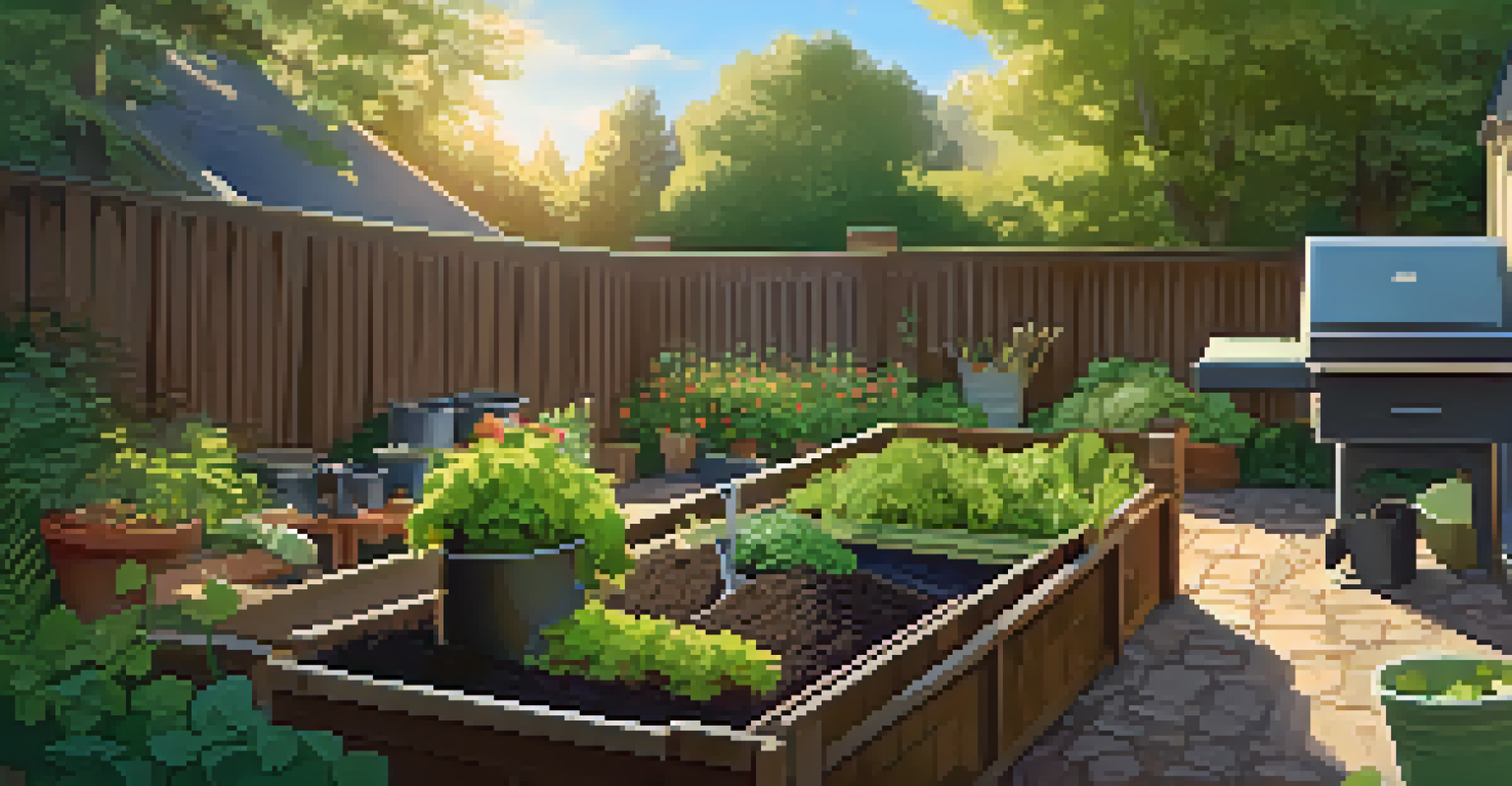Sustainable Landscaping Techniques for Eco-Friendly Homes

Understanding Sustainable Landscaping and Its Benefits
Sustainable landscaping focuses on creating beautiful outdoor spaces while minimizing environmental impact. This approach not only conserves resources but also enhances biodiversity, creating habitats for local wildlife. By using sustainable methods, homeowners can reduce their carbon footprint and promote a healthier ecosystem.
The greatest threat to our planet is the belief that someone else will save it.
One of the main benefits of sustainable landscaping is water conservation. Techniques such as xeriscaping, which involves using drought-resistant plants, can significantly lower your water usage. Additionally, creating rain gardens can help manage stormwater runoff, allowing water to soak into the ground rather than overwhelm drainage systems.
Moreover, sustainable landscaping can improve air quality by incorporating more plants and trees, which act as natural air filters. This not only provides a more pleasant outdoor environment but also contributes positively to the overall health of your community.
Selecting Native Plants for Your Landscape
Choosing native plants for your garden is one of the simplest ways to promote sustainability. Native plants are adapted to the local climate and soil conditions, requiring less water and maintenance than non-native species. By planting these species, you create a garden that thrives naturally and supports local wildlife.

For instance, plants like coneflowers and black-eyed Susans attract pollinators such as bees and butterflies, playing a crucial role in supporting biodiversity. This not only beautifies your garden but also helps sustain the essential pollinator populations that many other plants depend on.
Sustainable Landscaping Benefits
Sustainable landscaping conserves resources, enhances biodiversity, and creates healthier outdoor spaces.
Additionally, native plants are often more resistant to pests and diseases, reducing the need for chemical pesticides. This means a healthier garden for you and your family, as well as a safer environment for local wildlife.
Implementing Efficient Water Management Systems
Effective water management is crucial for sustainable landscaping. Incorporating features like rain barrels allows you to collect and store rainwater, which can be used to irrigate your garden. This not only saves money on water bills but also reduces the demand on municipal water supply.
Nature does not hurry, yet everything is accomplished.
Drip irrigation systems are another efficient option, delivering water directly to the roots of plants. This method minimizes evaporation and runoff, ensuring that your plants receive the moisture they need without wasting water. By adopting these systems, you can create a more resilient landscape.
Furthermore, mulching around plants helps retain soil moisture, reduces weeds, and adds organic matter to the soil as it breaks down. This simple technique enhances water efficiency and promotes healthier plant growth.
Creating Natural Habitats for Wildlife
A sustainable landscape can serve as a haven for local wildlife, promoting biodiversity in your area. By incorporating features like birdhouses, native plant gardens, and water features, you can create a welcoming environment for various species. This not only enriches your garden but also contributes to the ecological balance.
For example, adding a small pond can attract frogs and beneficial insects, while native flowering plants can draw in bees and butterflies. Each of these elements plays a vital role in supporting the ecosystem and can be a source of enjoyment for you and your family.
Native Plants Support Ecosystems
Choosing native plants reduces water usage and maintenance while promoting local wildlife and biodiversity.
Moreover, avoiding chemical pesticides and fertilizers creates a safer habitat for wildlife. By choosing organic methods and promoting natural pest control, you ensure that your garden remains a thriving ecosystem.
Utilizing Composting for Healthy Soil
Composting is an excellent way to reduce household waste while enriching your garden’s soil. By turning kitchen scraps and yard waste into nutrient-rich compost, you can improve soil structure and fertility. This not only benefits your plants but also minimizes the need for synthetic fertilizers.
Starting a compost pile is easy; all you need is a designated space in your yard or a compost bin. Layering green materials like vegetable scraps with brown materials such as leaves creates the perfect balance for decomposition. Over time, this process transforms waste into a valuable resource.
Using compost in your garden enhances water retention and promotes healthy root development. It also encourages beneficial microorganisms, which are essential for a thriving ecosystem within your soil.
Incorporating Hardscaping for Low Maintenance
Hardscaping refers to the non-plant elements in landscaping, like paths, patios, and retaining walls. By incorporating hardscaping features, you can create functional outdoor spaces that require less maintenance than traditional gardens. This not only saves time but also conserves water by reducing the area that needs to be irrigated.
For instance, using permeable paving materials allows rainwater to soak through, reducing runoff and promoting groundwater recharge. This sustainable approach minimizes the impact of your hardscape on the environment while providing durable surfaces for outdoor activities.
Efficient Water Management Systems
Implementing rain barrels and drip irrigation can significantly reduce water waste and improve plant health.
Additionally, strategically placed stone walls can help manage erosion, creating a more stable landscape. This combination of functionality and sustainability makes hardscaping an essential element of eco-friendly landscaping.
Embracing Organic Gardening Practices
Organic gardening is a cornerstone of sustainable landscaping. By avoiding synthetic chemicals, you promote a healthier environment for your plants and local wildlife. Organic practices, such as crop rotation and companion planting, help maintain soil health and prevent pests naturally.
For example, planting marigolds alongside vegetables can deter harmful insects while attracting beneficial ones. This natural pest control method reduces the need for pesticides and promotes a balanced ecosystem in your garden.

Moreover, organic gardening encourages biodiversity by fostering a variety of plants and insects. This diversity not only enhances the beauty of your landscape but also creates a more resilient ecosystem that can withstand environmental changes.